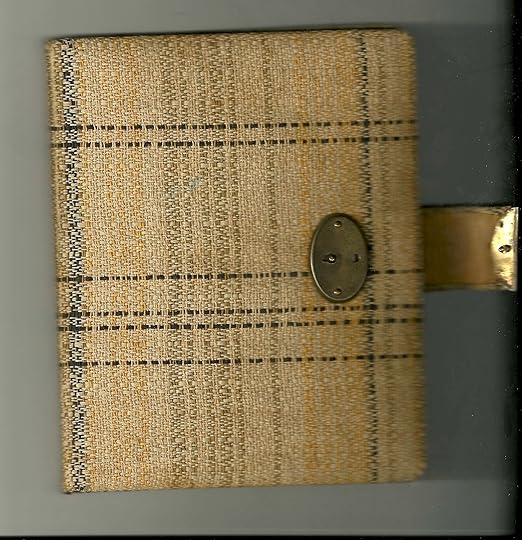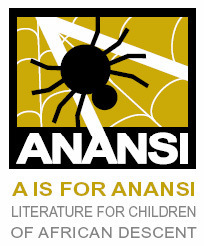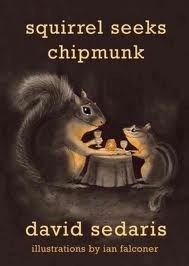Monica Edinger's Blog, page 108
October 9, 2010
There's Good News and Good News About Picture Books
The recent New York Times article, "Picture Books no Longer a Staple for Children" set off understandable ripples of concern, angry, worry, and dismay. But I have to say it didn't bother me because what I see in my little corner of the reading world has me certain that the picture book is alive and well. What I do see as changing is a broadening (not narrowing) of the age of the audience and a wonderful extending of the concept and form of the book itself.
First the good news about age. I've been teaching fourth grade for over twenty years and I have definitely seen a shift in what children have read before they come to my classroom. Yes, as was noted in the article, kids are reading longer books younger. Many of the books that were staples of my classroom twenty years ago are now staples in first, second, and third grade classrooms.
The most dramatic change was after the fourth Harry Potter book came out. The media frenzy had been enormous and kids of all reading levels and tastes came into my fourth grade classroom that fall lugging the monster book along with them, insisting they loved it and wanted to read the whole thing. Knowing that it wasn't for everyone (whatever the media said) I repeatedly assured them that they could read whatever they wanted to. After a few weeks when they saw there was nothing to prove, those whose taste ran to other sorts of books quietly abandoned Mr. Potter and picked up the books they really wanted to read. In the following years kids came in having already read the Harry Potter books and other large works of fantasy (Tolkien was big when the Lord of the Rings movies were coming out) and the reading landscape of my classroom permanently shifted.
So, yeah, I think there is a trend for kids to read longer books younger, at least in the sort of community I teach in. But I don't get the sense that this causes them to abandon picture books earlier. Rather, they read both. In my classroom today I've loads of picture books and the kids love for me to read them and to read them again and again on their own. Twenty years ago I focused pretty much exclusively on chapter books. So while kids seem to be reading chapter books younger they are also enjoying picture books when they are older. Good news, I'd say.
Now the good news about form. It may be that traditional picture books are a harder sell these days, but how about those in new forms? I understand the anxiety associated with e-books, but I also am intrigued by what folks are doing digitally. The Ipad seems to have gotten some creators very excited about new ways of presenting text and art together for children. I'm excited about graphic novels and am thrilled to see more being created for younger kids. Kids love novelty books, the kind with flaps, things to move, pop-ups, and such. I'm delighted that there are more of these than ever.
I'm excited about where books of all kind are going these days whether they are the kind made of paper or something else. Good news all around, I say.
Also at the Huffington Post.








October 7, 2010
Fiction about Real People: Some Thoughts Related to Sharon Dogar's Annexed
Sharon Dogar's Annexed has been testing me personally. A work of historical fiction, Dogar sensitively and thoughtfully imagines what Peter Van Pels, the boy in Anne Frank's final hidden home, felt and thought and did. The reviews have been glowing and I appreciate them all as I do her artistic right to write the book. Yet I found the book an impossible one to read fairly. I tried and tried, but as I read it I was unable to let go in Dogar's imagined world. My family, my childhood connection to Anne's diary, and my feelings about writing fiction about real people all kept getting in the way.
My problem begins with my own history. While my grandmother and father may have left Frankfurt, Germany in 1936, our family history remains —- say my great-grandfather's Edinger Institut or the street named after my great grandmother. My grandfather didn't leave and was killed, but my father didn't hold a grudge against his homeland. He became a specialist in Germany politics and I spent big chunks of my childhood in Germany.
And then there is the diary. Before we left for a year in Germany when I was eleven, my grandmother gave me The Diary of Anne Frank and a blank-but-old-looking diary. A few months later at the Anne Frank House in Amsterdam I realized that mine was very similar to Anne's, brought by my grandmother from Germany close to when Anne was writing hers. Because of that, because I was so close to Anne's age then, because I could identify with her assimilated German Jewish background, because she was clever and funny and a great writer … Anne's diary became a touchstone book for me.

And so while I was intrigued by the idea of giving voice to Peter Van Pels, taking someone whom we only know about through Anne and make him his own person, when it came to actually reading Dogar's imagining of his voice, I struggled. It made me enormously uncomfortable to read the fictional Peter's very intimate thoughts and experiences. It felt intrusive. He was a real person and we don't know, can't know, what he thought and felt. I thought of my father. He hated it when academics speculated about his family in articles and books so I can only imagine his response to a fictional speculation about someone like Peter.
Would I feel this way about a real person that didn't mean so much to me personally? Good question. It so happens that I've been working on the story of another real person — Sarah Margu Kinson, a child on the Amistad. Feeling that I had no business imagining how she felt I tried for years to tell her story as nonfiction, but it didn't work — there wasn't enough about her to do it. So I finally, gingerly, moved into fiction. I went from third person to first person. I fictionalized a true story. Using everything I could find to help me, I made-up some of her thoughts and feelings. I wrote historical fiction. And since I've done this I absolutely respect others who do so too.
Sharon Dogar wanted to give Peter Van Pels a voice of his own and created a work of fiction that is powerful, heartfelt and well written. That I can't read it without squirming is my problem not hers.
Also at the Huffington Post.







October 5, 2010
A Is For Anansi: Literature for Children of African Descent
I'm planning on attending as much as possible of this terrific-sounding (and free to the public) conference this Friday and Saturday. (Can't do all because of some personal conflicts, unfortunately.)
A Is For Anansi: Literature for Children of African Descent
October 8-9th 2010
presented by
Institute of African American Affairs – New York University
Location for all programs: Kimmel Center-NYU,
60 Washington Square South Rm. 914-Silver
Please RSVP at (212) 998-IAAA (4222)
A Is For Anansi will cover the history, criticism and theory of contemporary books for and about children of African descent, as told by its most influential critics, scholars, teachers and producers. The need for more in-depth analysis and for more information, critical evaluation, and publications on this topic still remain. The conference will look at these and consider other questions and issues as well.
Schedule:
Friday, October 8th, 2010 – Opening Reception
6:00 – 6:30 pm
● Opening KEYNOTE
Andrea Davis Pinkney—Vice President, Executive Editor, Scholastic
● Bernette Ford—Editor and Founder of Color-Bridge Books
● A BRIEF HISTORY OF THE LITERATURE
Nancy D. Tolson—Associate Professor, Early Childhood Education Department, Mitchell College
6:30-8:00 pm
● History/Significance/Meaning of Writing/Publishing/Selling Literature for and about Children of African Descent (importance of bookstores; going beyond the obvious that it's good for other people to learn about other people)
Moderator: Cheryl Willis Hudson—Vice President & Editorial Director, Just Us Books; Author, My Friend Maya Loves to Dance
Regina Brooks—Founder and President of Serendipity Literary Agency
Kathleen T. Horning— Director, Cooperative Children's Book Center of the School of Education at the University of Wisconsin-Madison
Joe Monti—Agent, Barry Goldblatt Literary; former children's fiction buyer at Barnes & Noble
Hannah Ehrlich— Marketing & Publicity Associate, Lee & Low Books
Colin Bootman—Illustrator/Author, The Steel Pan Man of Harlem,
The Music in Derrick's Heart
Saturday, October 9th, 2010
9:00 -9:30 am Breakfast and Welcome
9:30 – 11:00 am
● Issues of Identity & Representation (historical overview, phenotype-illustrating the books, role of language, look beyond books: cinema, advertisement, TV)
Moderator: Zetta Elliott—Author, Bird, A Wish After Midnight
George Ford—Illustrator, The Story Of Ruby Bridges, Ray Charles
Nicole Tadgell—Illustrator, Lucky Beans, No Mush Today
Myisha Priest—Assistant Professor, Gallatin, New York University
Khafilah McCurdy—Editor, The Journal of African American Children's Literature
Nnedi Okorafor —Author, The Shadow Speaker, Zahrah the Windseeker
Respondent: Fabienne Doucet— Fabienne DoucetNew York UniversitySteinhardt School of Culture, Education, and Human DevelopmentAssistant Professor of Education, New York University
11:00 – 12:30 pm
● Let the Children Speak (roundtable of kids discussing children's books, "books that have had a profound effect on me and why" video games vs. reading, why don't I read, use of social media like Twitter, Facebook, blogs, video blogs and more, audience can include children, parents, teachers)
Moderator: Clairesa Clay—Teacher/Filmmaker
12:30 – 1:30 pm ● Lunch
12:00 – 2:00 pm ● Rare Books Display from the collections of Fern Gillespie
and Rashidah Ismaili, Room 910
1:30 – 3:00 pm
● Critiquing & Evaluating the Books/Content (stereotypes, censorship, violence, raw images in picture books, depictions of the black family, political correctness in writing for children in terms of its ability to stimulate imagination as well as enhance cognitive and cultural development)
Moderator: Laura Atkins —Lecturer, National Centre for Research in Children's Literature in London, England
Wanda M. Brooks—Associate Professor of Literacy Education in the College of Education, Temple University
Andrew P. Jackson —Executive Director, Queens Library's Langston Hughes Community Library and Cultural Center
Oralia Garza de Cortes —Latino Children's Literature Consultant
John Sellers—Children's Reviews Editor, Publishers Weekly
Respondent: Summer Edward—Founder and Managing Editor of Anansesem-Caribbean children's literature ezine.
3:00 – 4:30 pm
● Literacy & Education for/of the Black Male
Moderator: Clairesa Clay—Teacher/Filmmaker
Katie Sciurba—Lecturer, University of San Diego
C. Jama Adams—Chairperson and Associate Professor, Department of African American Studies, John Jay College of Criminal Justice (CUNY)
Tony Medina— Poet/Associate Professor of Creative Writing, Howard University
4:30 – 5:00 pm ● Closure/Round Up/Survey
5:00 – 6:00 pm ● Rare Books Display from the collections of Fern Gillespie
and Rashidah Ismaili, Room 910
5:00 pm
RECEPTION w/PERFORMANCE
● Tribute to Virginia Hamilton, Tom Feelings, and Leo and Diane Dillon
Moderator: Esther Cooper Jackson—Editor, Freedomways Reader and Social Activist
Leo and Diane Dillon—Illustrators, Why Mosquitoes Buzz In People's Ears
Arnold Adoff—Poet and Anthologist, Roots and Blues: A Celebration
Rashidah Ismaili—Poet/Educator
Kamili Feelings—Writer/Teacher
Michael Patrick Hearn—Author, Myth, Magic, and Mystery: One Hundred Years of American Children's Book Illustration








October 3, 2010
David Sedaris and the Animals
Rudyard Kipling did it. So did James Thurber. Now David Sedaris tries his hand at animal fables. Warning #1: the bunny is NOT fluffy. Warning #2: bottoms are not called bottoms. Warning #3: more Orwell than Aesop, I'd say.








October 2, 2010
Remembering Donald Graves
Donald Graves, who passed away this week, was the shining light of a rethinking of how to teach writing to children. His seminal book, Writing: Teachers & Children at Work, was highly important for me and many others. I loved going to hear him speak at conventions and appreciated the way he was continually thinking and writing about writing, learning, creativity, and thinking. We have lost a remarkable and very important voice in American education.








October 1, 2010
Why Recess?
And I'm talking about the unstructured kind where kids learn to negotiate with each other, interact with each other, and even play without adults overseeing everything. Here's one reason why.








Social Drawing
Just came across this very intriguing NYTimes blog:
A series on learning the basics of drawing, presented by the artist and author James McMullan. Line By Line begins with installments on line, perspective, proportion and structure, and continues from there, using examples from art history to illuminate specific issues. Pencil and paper recommended.








September 29, 2010
Everyone's a Little Bit Book Bannerish
It is Banned Book Week, when we draw attention to books that are kept out of readers' hands, acts of censorship, and efforts to ban books across the United States. These sadly often involve individuals successfully seeing to it that a book is not used in a school, taken off a library shelf, or otherwise kept away from its readers. Frequently the challenges come about because of religious reasons, differences in ideas about parenting, apprehension about the mention of anything sexual, violence, and more. I have great admiration for all the writers, teachers, librarians, and book lovers who work fiercely and unceasingly to get the word out about this.
But it also has me wonder — what about the books I keep away from my students? The books that make me uncomfortable? Sure, some of them are old and will wither away, but there are others too. For years one of my favorite books to read aloud was Gary Paulsen's Harris and Me — until the year I had a Japanese child in the class. Set on an isolated farm during World War II, the young narrator is drawn into one escapade after another by his wild cousin, Harris. That year I got to the point when Harris wanted to play war and called the pigs "Commie Japs" and I stopped, suddenly hyperaware of how that must sound to my Japanese student. I then attempted a long explanation about the phrase. How Harris had the vaguest sense of the Japanese and only that they were the enemy and so forth and so on. My Japanese student looked puzzled as did the rest of the class. I went on and read the rest of the book — leaving out every subsequent mention of those Commie Japs. And that awakening caused me to never read the book aloud again. So perhaps I'm a book banner of sorts.
And how about last year's discussion around the Kickapoo Princess in Richard Peck's A Season of Gifts? While some may have kept the book on their library shelves I have to wonder if others backed off from it in other ways, ways more along the lines of my doing so with Harris and Me. Perhaps this isn't really book banning, but then what is it exactly?
I think it is always a good idea as we rail against small mindedness to consider if we ourselves are doing some of that ourselves. When I came of age in the 70s we were frequently urged to recognize our own racism and later reflect on white privilege. Sort of like that Avenue Q song —"Everyone's a Little Bit Racist." For me book banning is probably on a continuum — there is the quiet sort of not-using-a-book-as-it-has-stuff-that-makes-me-uncomfortable at one end and the egregious sort that makes headlines at the other end. And so I think that during this important week that as we speak up against censorship we should also reflect on whether we do any of it ourselves.
Also at the Huffington Post.








September 27, 2010
What is David Macaulay Up To?
The children book creator David Macaulay is a genius. Really. A recipient of one of the coveted MacArthur Fellowships, the so-called Genius Awards, he was honored for being one of those "talented individuals who have shown extraordinary originality and dedication in their creative pursuits and a marked capacity for self-direction." Certainly it was perfect for this energetic artist who is always exploring, experimenting, and playing with new and different ideas.
One recent way David did...
September 25, 2010
In the Classroom: Reading Aloud Hugo Cabret
This year I'm doing a year-long study of Charlie Chaplin and so, wanting my first read aloud book to connect, I decided to start with Brian Selznick's marvelous Caldecott winner, The Invention of Hugo Cabret. As many know it has much to do with early films in plot, art, sensibility, and design. Having read aloud many a picture book and the occasional graphic novel I figured I could pull off this unique hybrid of a book.
It turned out to be absolutely fantastic and even better than I could ...





